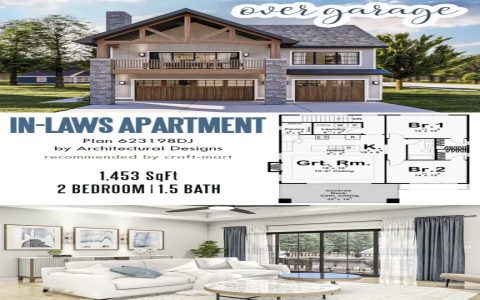Understanding Tandem Garages
A two-car tandem garage is a garage configuration designed to house two vehicles parked one behind the other, sharing a single-width garage door. This contrasts with a traditional double garage where cars are parked side-by-side, often each with its own door or sharing a wider double door.
Advantages of a Tandem Configuration
- Space Efficiency on Narrow Lots: Tandem garages are an excellent solution for properties with limited frontage or narrow building lots where a standard double-wide garage is not feasible.
- Reduced Building Footprint: By arranging vehicles lengthwise, the overall width of the garage is minimized. This can reduce the building's footprint, potentially allowing for more yard space or a larger primary dwelling on the same lot.
- Potential Cost Savings: In some cases, construction can be less expensive than a double-wide garage of equivalent vehicle capacity due to a simpler roof structure and narrower foundation requirements.
Disadvantages and Practical Challenges
- Vehicle Shuffling: The primary operational drawback is the "car shuffle." To access the car parked at the rear, the front car must be moved out of the garage first. This can be inconvenient, especially if vehicles are used at different times by different household members.
- Limited Accessibility: Quick, independent access to the rearmost vehicle is not possible without moving the front vehicle.
- Storage Constraints: While offering depth, the narrow nature may limit flexible wall storage options along the sides of the vehicles compared to a wider garage.
- Resale Perception: Some homebuyers may view a tandem garage as less desirable than a traditional side-by-side double garage, which could potentially impact market appeal or resale value depending on local preferences.
Important Design and Usage Considerations
- Sufficient Length: Ensure the garage interior is long enough to accommodate both vehicles comfortably, with adequate space between them and at both ends for safe passage and access. Always factor in the lengths of your largest anticipated vehicles.
- Garage Door and Opener: A reliable, high-quality garage door and robust opener are essential, particularly if vehicles need to be moved frequently.
- Lighting: Adequate illumination throughout the entire length of the garage is crucial for safety, visibility, and usability. Consider multiple light fixtures.
- Workflow Planning: If one vehicle is used more frequently, strategically parking it in the front position can minimize daily inconvenience. This is ideal if the rear space is for a less-used vehicle.
- Clearance: Verify sufficient height clearance throughout the garage, especially if accommodating larger vehicles such as SUVs or trucks.
- Ventilation: As with any garage, ensure proper ventilation to manage vehicle exhaust fumes and moisture.










